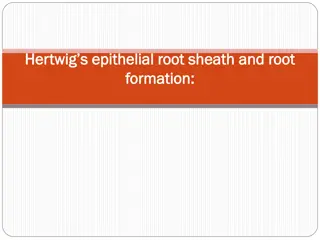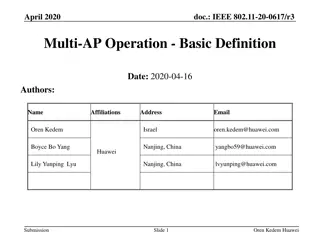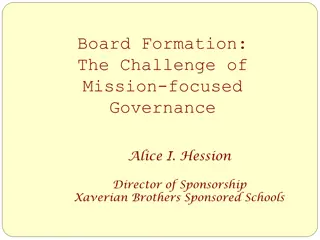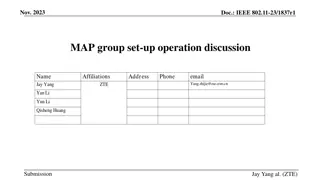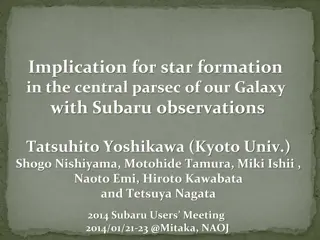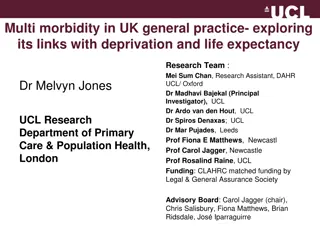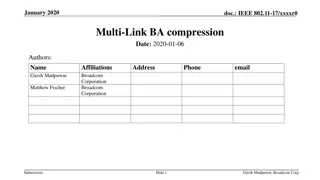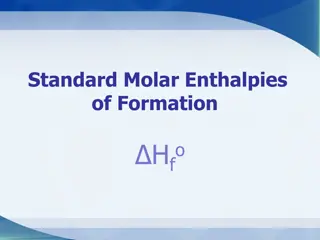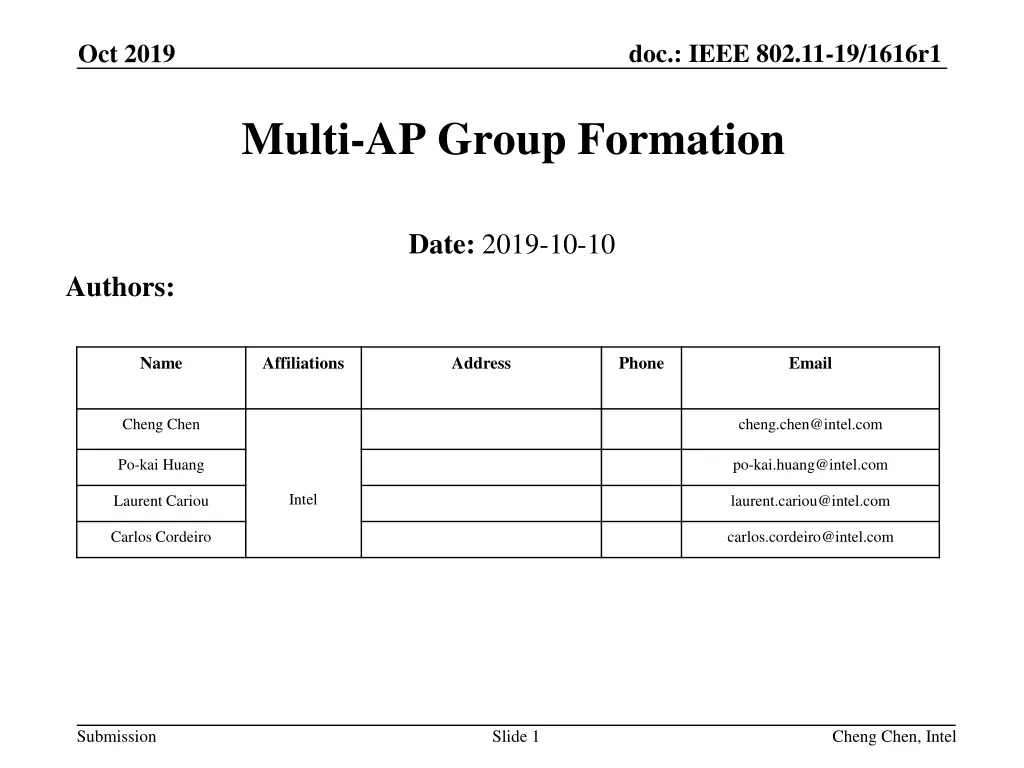
IEEE 802.11-19/1616r1 Multi-AP Group Formation Study
Explore the fundamental framework of Multi-AP operations focusing on the formation of a group of APs for coordination functions. Delve into the management/control role of APs in an EHT Multi-AP group, examining options for group formation procedures and challenges in Coordinator AP selection within a managed environment.
Download Presentation

Please find below an Image/Link to download the presentation.
The content on the website is provided AS IS for your information and personal use only. It may not be sold, licensed, or shared on other websites without obtaining consent from the author. If you encounter any issues during the download, it is possible that the publisher has removed the file from their server.
You are allowed to download the files provided on this website for personal or commercial use, subject to the condition that they are used lawfully. All files are the property of their respective owners.
The content on the website is provided AS IS for your information and personal use only. It may not be sold, licensed, or shared on other websites without obtaining consent from the author.
E N D
Presentation Transcript
doc.: IEEE 802.11-19/1616r1 Oct 2019 Multi-AP Group Formation Date: 2019-10-10 Authors: Name Affiliations Address Phone Email Cheng Chen cheng.chen@intel.com Po-kai Huang po-kai.huang@intel.com Intel Laurent Cariou laurent.cariou@intel.com Carlos Cordeiro carlos.cordeiro@intel.com Submission Slide 1 Cheng Chen, Intel
doc.: IEEE 802.11-19/1616r1 Oct 2019 Abstract Most EHT Multi-AP contributions so far have primarily focused on how to leverage the coordination within a Multi-AP group, assuming some APs act as Triggering APs and others serve as Triggered APs. In this presentation we study the fundamental framework of Multi-AP operations, i.e., the formation of a group of APs for various Multi-AP coordination functions. We focus on the management/control role of one AP among a group of APs that participate in Multi-AP coordination functions. We do not consider the sequence-trigger roles, i.e., who can send Multi-AP trigger frames etc. We will call the set of these APs as an EHT Multi-AP group. For simplicity, we use terminologies of the Coordinator AP and Coordinated APs in the management domain to differentiae it from the Master AP and Slave APs used in the domain of specific trigger operations as in most previous presentations. Slide 2 Submission Cheng Chen, Intel
doc.: IEEE 802.11-19/1616r1 Oct 2019 Options for EHT Multi-AP group formation Option 1: The specific Multi-AP group formation procedures are not defined in 11be. In 11be, we simply assume there already exists an EHT Multi-AP group with a pre- configured Coordinator AP. Leave the formation of the group, and the designation of the Coordinator AP to some methods that are implementation specific (e.g. through User or Service Provider configuration). Option 2: We define a complete set of Multi-AP group formation procedures in 11be. Submission Slide 3 Cheng Chen, Intel
doc.: IEEE 802.11-19/1616r1 Oct 2019 EHT Multi-AP group formation Generally, an EHT Multi-AP group should be formed in a relatively managed environment, such as enterprise network, factory, or within the same home. Deployment of APs in these scenarios are mostly static. The selection of the Coordinator AP depends largely on topology, as the key requirement is all Coordinated APs must be able to talk to the Coordinator AP. Coordinator AP Coordinated AP1 Coordinated AP2 X Submission Slide 4 Cheng Chen, Intel
doc.: IEEE 802.11-19/1616r1 Oct 2019 Coordinator AP selection Metric-based selection mechanisms may not work in an EHT Multi-AP group because: 1. The metric-based selection mechanism can be easily complicated if there are multiple APs that want to become the Coordinator AP. 2. Each pair of APs need to exchange the metric for Coordinator AP selection. The number of exchanges grow exponentially with the number of APs. Dynamic change of the Coordinator AP has the following challenges: 1. The topology within an EHT Multi-AP group is generally static and it is not necessarily true that any AP is able to communicate to the other APs. 2. Once the Coordinator AP changes, how to ensure the Coordinated APs trust the new Coordinator AP? 3. Once the Coordinator AP changes, all Coordinated APs and STAs within the group need to be notified. This will be a large overhead. Submission Slide 5 Cheng Chen, Intel
doc.: IEEE 802.11-19/1616r1 Oct 2019 Option 1 or 2? In summary, EHT Multi-AP Group formation is more like a long-term configuration and should not change dynamically. As a result, Option 1 is preferred. EHT Multi-AP group formation and Coordinator AP selection could then be left to implementation specific mechanisms. However, in 11be, we need to define a hook for implementation specific operations, and other management-level group procedures such as the discovery of an EHT Multi-AP group, the discovery of the Coordinator AP, Multi-AP operation rules etc. Submission Slide 6 Cheng Chen, Intel


